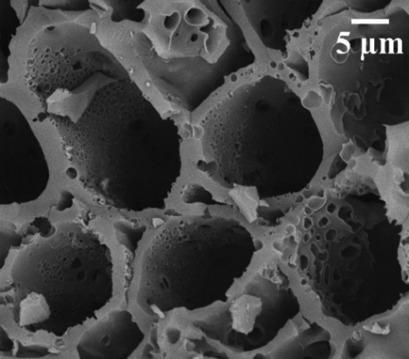当前位置:
X-MOL 学术
›
Chem. Eng. Technol.
›
论文详情
Our official English website, www.x-mol.net, welcomes your
feedback! (Note: you will need to create a separate account there.)
Effect of Citric Acid and Sodium Chloride on Characteristics of Sunflower Seed Shell-Derived Activated Carbon
Chemical Engineering & Technology ( IF 1.8 ) Pub Date : 2021-06-21 , DOI: 10.1002/ceat.202100117 Ayoob Bahiraei 1 , Jamshid Behin 1
Chemical Engineering & Technology ( IF 1.8 ) Pub Date : 2021-06-21 , DOI: 10.1002/ceat.202100117 Ayoob Bahiraei 1 , Jamshid Behin 1
Affiliation

|
Micro- and mesoporous activated carbons (ACs) with ultrahigh surface area were synthesized from sunflower seed shells (SSS) by carbonization followed by KOH activation. The effects of citric acid (CA) in both carbonization and activation and of sodium chloride (NaCl) in the activation step were evaluated through the response surface method. Na atoms produced during activation can diffuse in the carbon texture and intensify the role of K atoms in expanding and creating new microporosity, whereas its combination with CA results in a significant proportion of mesopores. CA sequestrates metal ions and facilitates the decomposition of lignocellulosics, which prevents the formation of heavy tar blocking the pores. A high capacity for CO2 adsorption was also observed for the NaCl-activated sample which was higher than that reported previously.
中文翻译:

柠檬酸和氯化钠对葵花籽壳源活性炭特性的影响
具有超高表面积的微孔和介孔活性炭 (ACs) 是由向日葵籽壳 (SSS) 通过碳化和 KOH 活化合成的。通过响应面法评估了柠檬酸 (CA) 在碳化和活化过程中以及氯化钠 (NaCl) 在活化步骤中的影响。活化过程中产生的 Na 原子可以在碳结构中扩散,并加强 K 原子在膨胀和产生新微孔方面的作用,而它与 CA 的结合导致了相当大比例的介孔。CA 螯合金属离子并促进木质纤维素的分解,从而防止形成堵塞孔隙的重焦油。高容量 CO 2 对于 NaCl 活化的样品,也观察到了吸附,这比之前报道的要高。
更新日期:2021-08-20
中文翻译:

柠檬酸和氯化钠对葵花籽壳源活性炭特性的影响
具有超高表面积的微孔和介孔活性炭 (ACs) 是由向日葵籽壳 (SSS) 通过碳化和 KOH 活化合成的。通过响应面法评估了柠檬酸 (CA) 在碳化和活化过程中以及氯化钠 (NaCl) 在活化步骤中的影响。活化过程中产生的 Na 原子可以在碳结构中扩散,并加强 K 原子在膨胀和产生新微孔方面的作用,而它与 CA 的结合导致了相当大比例的介孔。CA 螯合金属离子并促进木质纤维素的分解,从而防止形成堵塞孔隙的重焦油。高容量 CO 2 对于 NaCl 活化的样品,也观察到了吸附,这比之前报道的要高。











































 京公网安备 11010802027423号
京公网安备 11010802027423号